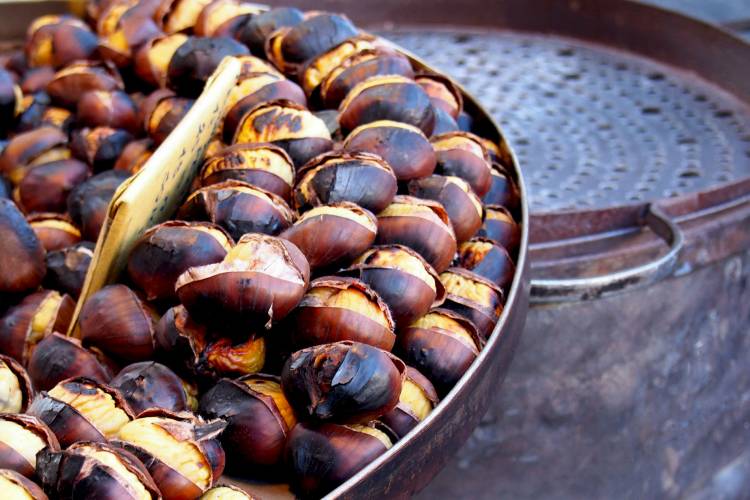How to roast chestnuts
An autumn without chestnuts wouldn't be right! Would you like to roast chestnuts at home? Today we bring you several simple ways you can roast chestnuts yourself. Ready?
TRIED AND TESTED
Share

The fruit of the chestnut tree (or, rather, its seed), is shaped like a globe or dome. It can vary in diameter between two and four centimetres and its characteristic hard shell (known as the endocarp) is a rich dark brown colour. In addition to these qualities, chestnuts are delicious and have many properties and applications.
And, despite being grouped together with other nuts, chestnuts do not have a very high calorie count, as they contain far less fat than their counterparts. Not only that: they are also a great source of carbohydrates, as well as being rich in fibre and low in sugar. All this makes them a source of energy that is as good as it is healthy. Chestnuts can be eaten on their own (traditionally, street stalls serve them in a cone), but they can also be used as a condiment, creamed, as the base of custards or flans, and even as an ingredient in haute cuisine recipes.
But how do you prepare chestnuts? Or rather, how can you roast chestnuts at home? In reality it is very straightforward and can be done in a variety of ways. To find out exactly how to make roasted chestnuts read on carefully.
How to roast chestnuts at home step by step
One of the best ways to roast chestnuts at home is to use the oven. There isn't really any great mystery to oven-roasting chestnuts at home. The first thing you will need is to get hold of the chestnuts themselves, following a few simple guidelines: choose chestnuts that are bright shiny brown and without blemishes; they should be large and heavy; make sure that they are all approximately the same size (so that roasting cooks them evenly), and, above all, that they are are not damaged in any way.
Once washed and well dried, the next thing to do is make a deep cut through the two skins. This can be done in the centre or on the sides. You need to be able to see the inside to ensure it is white and free of bugs. This action also ensures that the chestnut can 'breathe', something that is highly recommended when cooking. The next step is to put them in the oven.
How to roast chestnuts in the oven? The first thing to do is preheat the oven. We advise leaving it on at about 200 degrees for 10 minutes. Next, we put the chestnuts in. Ideally they should receive heat from both above and below, so select your program accordingly. And that's it basically! All you have to do is leave them to cook for about 10 minutes on one side, and another 10 minutes turning on the other. Turn them by giving the pan a shake. Once roasted and hot, they need to be peeled (much harder to do when they are cold) and lightly salted.

We can also prepare chestnuts using a pan. To do this, simply place the pan on the hob with the chestnuts inside. They will take about half an hour to roast. Put the lid on so that the temperature can build up, and turn them regularly so that they cook evenly. This is key to ensuring they do not end up burnt on the outside but raw in the middle. This method is suitable for smaller amounts than oven-roasting, with the precise quantity depending to a great extent on the pan we use (although they can always be done in two batches).
Lastly, how do you make chestnuts in the microwave? Following more or less the same steps as previously. And, although it is true that results lie somewhere between boiled and roasted, it is also true that it is the most practical, quickest and cleanest option. Once washed, dried and cut, simply place the chestnuts in a microwave-safe container with a lid and cook according to the power setting chosen: for example, at 800 W, about 3 minutes will be sufficient; at a higher temperature, less, and vice versa. Of course, if we can see they are not ready upon taking them out of the microwave there is always the option to cook them a little longer.






